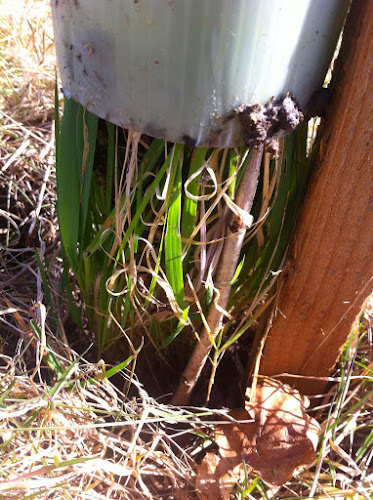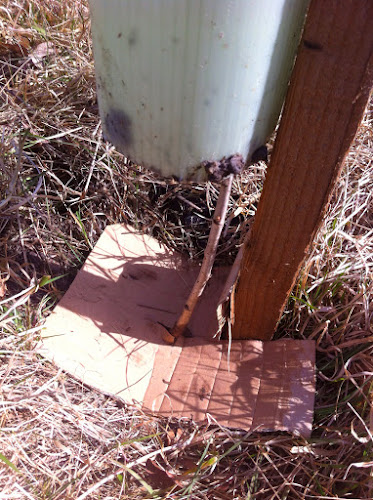As I was keen not to use chemicals when growing my trees, the only other option to control weeds was mulching. Unfortunately, the membrane used was a bit flimsy and although it might have been OK with woodchip on top, the amount needed and the difficulty in carrying to where it was needed, meant that most of the trees didn't get mulched as much as they should have been.
What's the purpose of mulch? Weed control and keeping moisture in the soil. The latter isn't a problem, in many places there is too much moisture and I'm worried the trees are going to drown, but the sheltered conditions inside the tree tubes is also ideal for many weeds, mainly grass but also docks, sorrels and rushes.
Lifting the tubes to remove the weeds is quite therapeutic, especially on a sunny day like today, but I got the feeling that I was only delaying the problem and that the weeds would soon grow up again. A parcel that arrived was wrapped in cardboard and it gave me an idea:
A few minutes work with scissors gave me a handful of postcard sized mulch mats that could be put around the trees in the bottom of the tubes. Easy to make and carry (again, to carry full sized pieces for mulching would not be practical and also sheet cardboard tends to make ideal habitat for voles, which have already destroyed a number of trees. Applying the mats is easy and gives a light proof barrier that should help suppress weeds for a few months, before the cardboard rots away. Hopefully in that time, the trees should be well enough established that they won't need further care
The tube is just pushed on top of the cardboard, holding it securely in place:
In about 30 minutes I'd mulched about 40, which is a lot quicker than conventional mulching would have taken. As predicted, the trees that had dropped enough leaves down inside the tube had made conditions too difficult for weeds (self mulching) - if only they were all like that.
I'm not sure how much affect weeds have when the trees are out of the tubes but it certainly looks neater when inspecting them - satisfying to see how thick some of the stems have grown - roll on spring!














